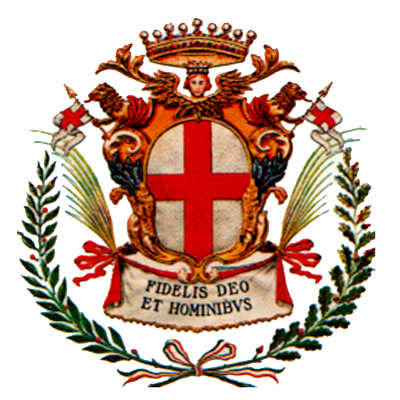CHURCH OF SANTA MARIA DELLA PIEVE
The church, thought to be the oldest in Savigliano, may have been built as early as the fifth century. An epigraphic fragment datable to the seventh century, discovered in 1849, testifies to the ancient origins of this complex. The earliest deed mentioning Santa Maria della Pieve is dated 1184: ruins of buildings datable to at least the twelfth century emerged during renovation work conducted in 1992.
The church was damaged in 1360 when the city was sacked and destroyed by the mercenaries of Amadeus VI, at war with Giacomo d'Acaja, but reconstruction commenced in 1389, at which time the orientation of the church was changed and its façade moved from west to east. In fact, the medieval remains of the apse now lie under the current façade.
From the early fifteenth century until the mid-nineteenth century the complex housed the tombstone of the Venerable Gudiris (seventh century), a woman known for her miraculous cures of the sick; it is now at the Civic Museum. Between the late fifteenth century and 1591 other work was done on the fourteenth-century structure.
By the mid-eighteenth century the church had deteriorated so much that the church had to be closed to worshippers. The architect Bartolomeo Ricca did work on the church between 1767 and 1769, giving it its current appearance, but maintaining the layout with a nave and side chapels used for the previous construction.
In 1847 a fire destroyed the apse, which was reconstructed in 1849 by Maurizio Eula, who also added the high altar by the (1851) intarsia artist Giuseppe Ferrero. The frescoes are the work of Domenico Cardellino.
The bell tower was completely rebuilt in 1870 and the small terrace at the top was long used as an astronomical observatory. In fact, Savigliano native Giovanni Virginio Schiaparelli, destined to become one of the greatest astronomers of the nineteenth century, came here often as a young man.
The building houses important historical works, including a delicate White Madonna datable to the early fourteenth century, Jesus in the Garden and the Coena Domini from 1627, by Giovanni Antonio Molineri (1577-1631). Jean Claret (1599-1679), an artist tied to Molineri's circle, painted the Ecstasy of Saint Francis (1645) and Ex-voto (1670), marvellously expressive works.

